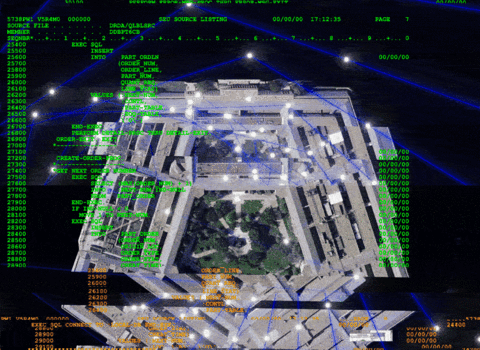Flying Blind
The authors of the Drone Papers were delivering a simple message: send more money.
The Drone Papers—a cache of recently leaked PowerPoint slides outlining the U.S. Joint Special Operations Command’s drone assassination program—certainly offer an instructive firsthand glimpse into the mindset behind the military’s manhunting activities. (The companion CIA program does not feature in the leak.) As might be expected, acronyms are sprayed across the slides like shrapnel: B.B.C.s refer to the Baseball Cards summarizing the habits and personal lives of H.V.I.s, or High Value Individuals, that make their way to the Oval Office; E.K.I.A., Enemy Killed in Action, is a convenient term for nameless victims posthumously designated as terrorists. Pity the poor Afghan policeman, an A.N.S.F., Afghan National Security Force, if someone mistypes a couple of letters in his designation and he goes on a B.B.C. as an A.Q.S.L., Al Qaeda Senior Leadership.
Behind the reality-clouding jargon and the chilling depiction of a murder machine at work, however, the authors of the slides were clearly delivering a simple message: send more money.
Understanding this helps explain some otherwise surprisingly candid admissions in the material, such as the acknowledgment that an intense H.V.I. campaign, Operation Haymaker, in two provinces of northeast Afghanistan in 2013 and early 2012 caused only “marginal disruption” to targeted Al Qaeda leadership. On a slide bewailing another operation’s specific shortcomings, such as shortfalls in “finishes” (killings), the author invariably blames a shortage of drones and technological sophistication. A successful finish apparently requires “massed” surveillance by multiple drones, meaning that while the target is being finished off, other candidates for death go unwatched, a phenomenon lamented as “blinking.” The recommended solution spelled out on a slide: “Additional ISR [drones and other intelligence-gathering systems] Will Prevent ‘Blinking.’” Similarly, Haymaker was inevitably doomed to mere “temporary” effects “without a long-term, persistent campaign.”
Farther afield, in Yemen and East Africa, missions are evidently hamstrung by the time it takes for drones to get to the target, an impediment evocatively labeled the “tyranny of distance.” A former Pentagon analyst with long exposure to budget-fertilizing studies of this sort commented to me, “Whoever dreamt up that ‘tyranny’ phrase deserves immediate promotion to four-star rank. It could easily put $10 billion on the budget.” For example, the “persistence” that could obviate the need for smaller drones to make time-wasting trips all the way to southern Somalia might be supplied by buying more Global Hawks, the high-flying long-duration drone with a current cost somewhere north of $200 million a copy.
Less obviously, fulfilling a demand on the slides for “H.D. F.M.V.”—high-definition video— would come with a very stiff price tag indeed. Identifying designated victims has long been a problem (out of more than 200 people killed in Haymaker by February 2013, just thirty-five were on the target list), partly caused by the fact that despite popular impressions to the contrary, drones don’t see very well—in some circumstances their vision is no better than 20/200, the legal definition of blindness for drivers in this country. Children, for example, can normally only be recognized as such on an I.S.R. video if they are standing next to an adult, a problem known in the business as “slants.” Part of the reason for perennially blurry pictures is that the information, once collected by the drone’s sensor, must be transmitted via satellite to pilots and myriad headquarters oceans and continents away. This consumes an enormous amount of bandwidth, which is already very costly, especially as 80 percent of the bandwidth used by the military is rented from commercial providers. As far back as 2001 Special Forces Command alone was already spending $1 million a day in this way, and the cost has grown exponentially since then.
A clear-eyed defense planner or legislator briefed on these slides might reasonably conclude that the H.V.I. program is a militarily ineffective money pit and move to close the whole thing down. A more likely consequence is that recipients of this briefing will harken to disarming confessions of failure and do the necessary at budget time. If the wider public gets the same message, so much the better, which gives rise to an unworthy thought: might not this leak have had a little official encouragement?
Andrew Cockburn is Harper’s Magazine’s Washington Editor and author of Kill Chain, The Rise of the High Tech Assassins (Holt 2015). Twitter: @andrewmcockburn.









































































































